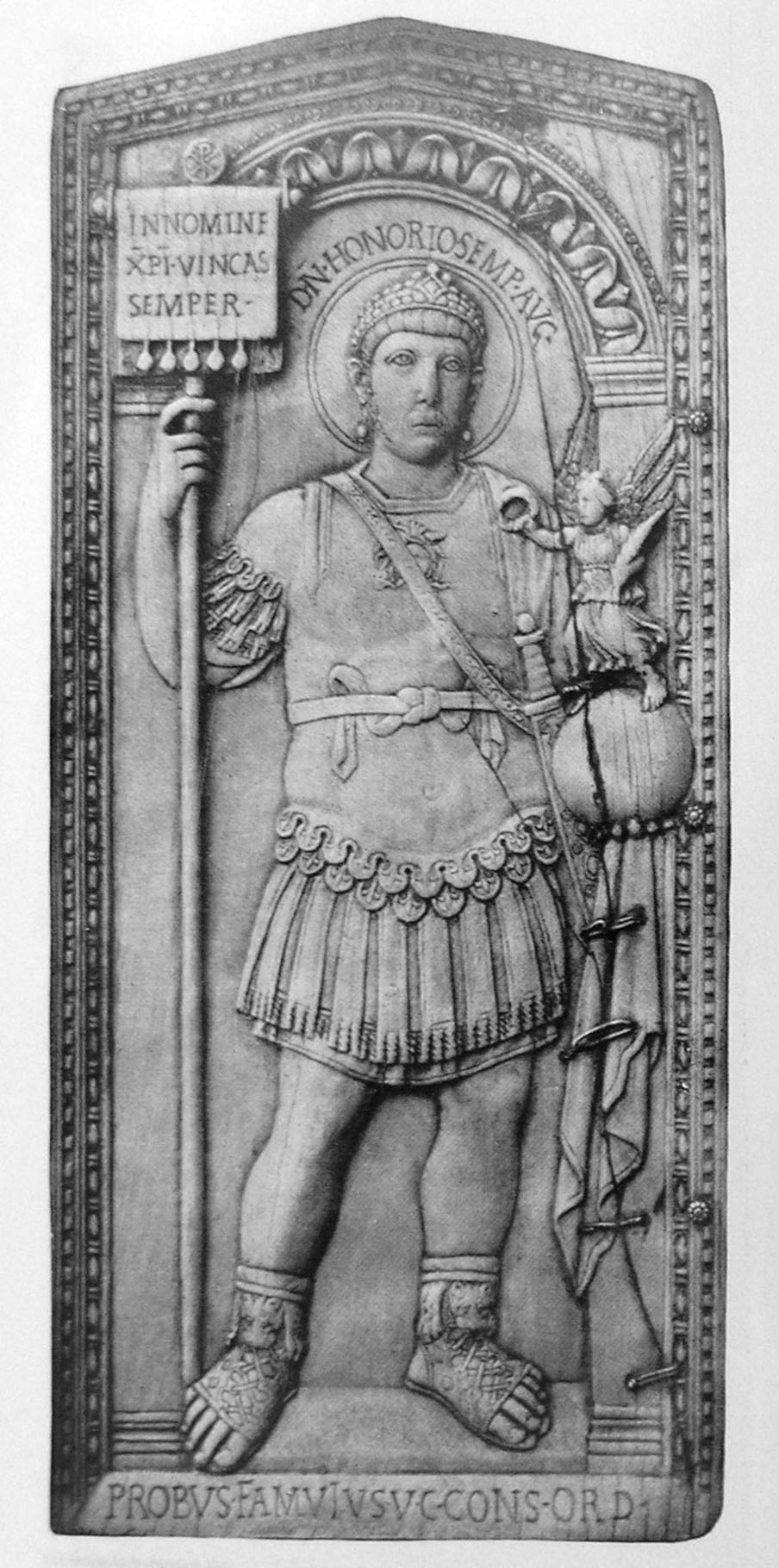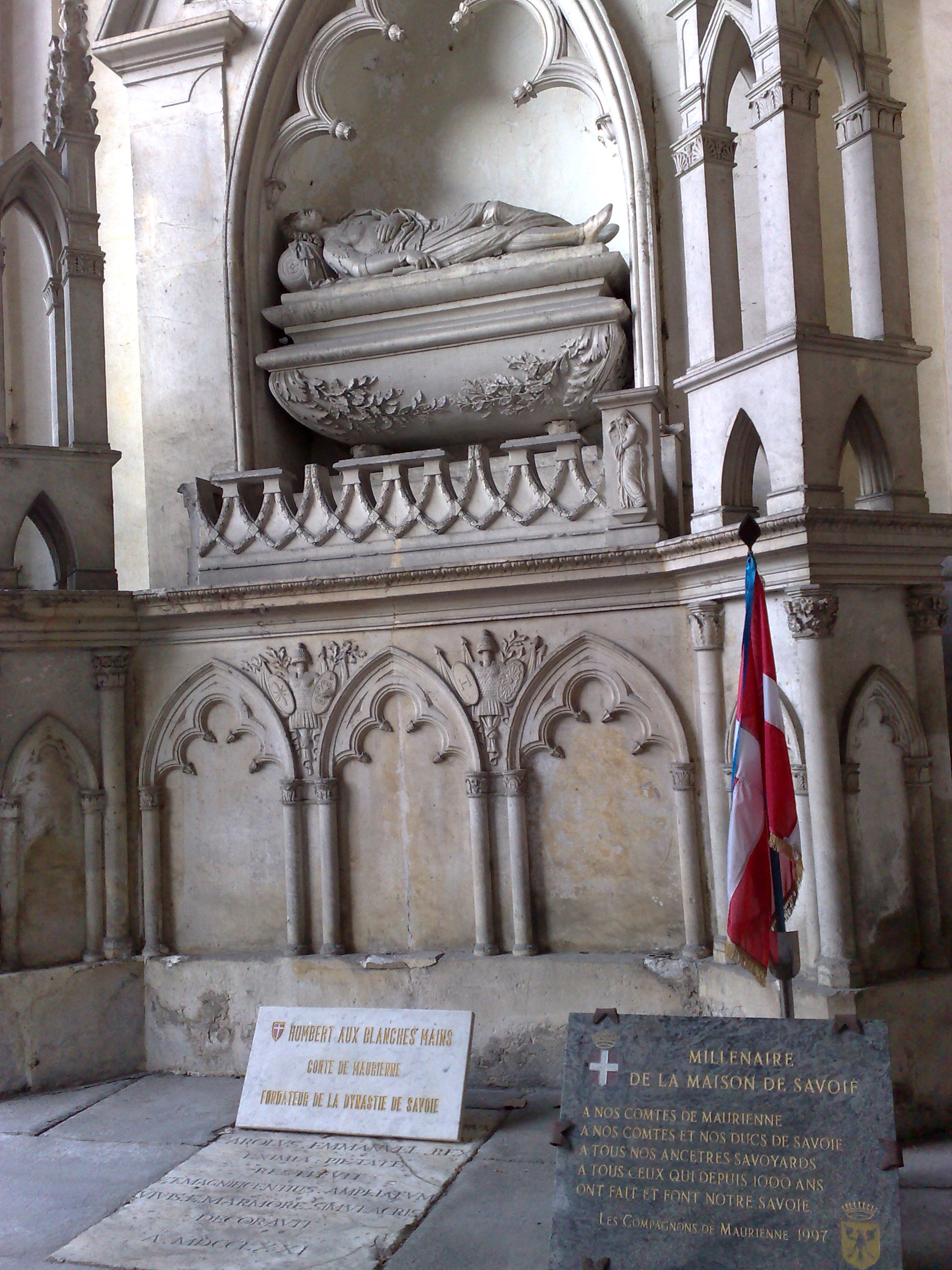|
Burchard (bishop Of Aosta)
Burchard or Bouchard or Buckard or Burchard Aosta (died after 10 July 1068), was Bishop of Aosta (1025–1032) and Archbishop of Lyon (1033–1034), under the name of Burchard III, and finally prior of the territorial abbey of Saint Maurice. Burchard was a son of Humbert I, Count of Savoy and Aosta and his wife Auxilia, who may have originated from Aosta and who would have been the sister of Anselm of Aosta, bishop from 994–1025. Burchard was jointly involved with his father in the governance of the Aosta Valley from April 8, 1022, perhaps as coadjutor beforehand to ensure the succession of his maternal uncle as bishop of Aosta in 1025. He was mentioned as bishop of Aosta on October 19, 1024 in a deed of gift alongside his father Humbert. On 10 March 1026 Buchard was transferred to the archbishopric of Lyon, which proves the assertion of regional power by his family. According to the chronicler Raoul Glaber, who specifies that he was the nephew of his predecessor, Burchard II ... [...More Info...] [...Related Items...] OR: [Wikipedia] [Google] [Baidu] |
Bishop Of Aosta
The Diocese of Aosta (, , ) is a Latin diocese of the Catholic Church. It has existed in its modern form since 1817. It is a suffragan of the Archdiocese of Turin in Italy."Diocese of Aosta" ''''. David M. Cheney. Retrieved 29 February 2016."Diocese of Aosta" ''GCatholic.org''. Gabriel Chow. Retrieved 29 February 2016. History [...More Info...] [...Related Items...] OR: [Wikipedia] [Google] [Baidu] |
Archbishop Of Lyon
The Archdiocese of Lyon (; ), formerly the Archdiocese of Lyon–Vienne–Embrun, is a Latin Church metropolis (religious jurisdiction), metropolitan archdiocese of the Catholic Church in France. The archbishops of Lyon are also called Primate of Gaul, primates of Gaul. The oldest diocese in France and one of the oldest in Western Christianity, its archbishop is usually elevated by the pope to the rank of Cardinal (Catholic Church), cardinal. Bishop Olivier de Germay was appointed archbishop on 22 October 2020. History In the ''Notitia Galliarum'' of the 5th century, the Roman ''Provincia Gallia Lugdunensis Prima'' contained the cities of Metropolis civitas Lugdunensium (Lyon), Civitas Aeduorum (Autun), Civitas Lingonum (Langres), Castrum Cabilonense (Chaâlons-sur-Saône) and Castrum Matisconense (Mâcon). The confluence of the Rhône and the Saône, where sixty Gallic tribes had erected the altar to Rome and Augustus, was also the centre from which Christianity was propagat ... [...More Info...] [...Related Items...] OR: [Wikipedia] [Google] [Baidu] |
Humbert I, Count Of Savoy
Humbert I (; 9801047), better known as Humbert the White-Handed () or (), was the count of Savoy from 1032 until his death and the founder of the House of Savoy. Of obscure origins, his service to the Holy Roman Emperors Henry II and Conrad II was rewarded with the counties of Maurienne and Aosta and lands in Valais, all at the expense of local bishops and archbishops; the territory came to be known as the county of Savoy. Biography Family Humbert was the son of Amadeus, who may or may not have preceded him as count of Maurienne. His brother was Bishop Otto of Belley. Humbert is the progenitor of the dynasty known as the House of Savoy. The origins of this dynasty are unknown, but Humbert's ancestors are variously said to have come from Saxony, Burgundy or Provence. Given Humbert's close connections with Rudolf III of Burgundy, it is likely that his family was Burgundian, and was descended either from the dukes of Vienne, or from a Burgundian aristocratic family (such as ... [...More Info...] [...Related Items...] OR: [Wikipedia] [Google] [Baidu] |
Archbishopric
In church governance, a diocese or bishopric is the ecclesiastical district under the jurisdiction of a bishop. History In the later organization of the Roman Empire, the increasingly subdivided provinces were administratively associated in a larger unit, the diocese (Latin ''dioecesis'', from the Greek term διοίκησις, meaning "administration"). Christianity was given legal status in 313 with the Edict of Milan. Churches began to organize themselves into dioceses based on the civil dioceses, not on the larger regional imperial districts. These dioceses were often smaller than the provinces. Christianity was declared the Empire's official religion by Theodosius I in 380. Constantine I in 318 gave litigants the right to have court cases transferred from the civil courts to the bishops. This situation must have hardly survived Julian, 361–363. Episcopal courts are not heard of again in the East until 398 and in the West in 408. The quality of these courts was l ... [...More Info...] [...Related Items...] OR: [Wikipedia] [Google] [Baidu] |
Lyon
Lyon (Franco-Provençal: ''Liyon'') is a city in France. It is located at the confluence of the rivers Rhône and Saône, to the northwest of the French Alps, southeast of Paris, north of Marseille, southwest of Geneva, Switzerland, northeast of Saint-Étienne. The City of Lyon is the List of communes in France with over 20,000 inhabitants, third-largest city in France with a population of 522,250 at the Jan. 2021 census within its small municipal territory of , but together with its suburbs and exurbs the Lyon Functional area (France), metropolitan area had a population of 2,308,818 that same year, the second largest in France. Lyon and 58 suburban municipalities have formed since 2015 the Lyon Metropolis, Metropolis of Lyon, a directly elected metropolitan authority now in charge of most urban issues, with a population of 1,424,069 in 2021. Lyon is the Prefectures in France, prefecture of the Auvergne-Rhône-Alpes Regions of France, region and seat of the Departmental co ... [...More Info...] [...Related Items...] OR: [Wikipedia] [Google] [Baidu] |
Raoul Glaber
Rodulfus (or Radulfus or Raoul Glaber; 985–1047), was an 11th-century Benedictine chronicler. Life Glaber was born in 985 in Burgundy. At the behest of his uncle, a monk at Saint-Léger-de-Champeaux (now Saint-Léger-Triey, Glaber was sent to a monastery at the age of twelve, but he was eventually expelled for disobedience. He spent much of his life moving from one monastery to another. He then entered Moutiers-Saint-Jean Abbey near Dijon, and around the year 1010, joined the Abbey of St. Benignus, also near Dijon. There he met the reform-minded cleric from Piedmont, Abbot William of Volpiano.MacErlean, Andrew. "Raoul Glaber." The Catholic Encyclopedia Vol. 6. New York: Robert Appleton Company, 1909. 25 June 2019 In 1028 he travelled to Italy with Volpiano, who encouraged to him write wha ... [...More Info...] [...Related Items...] OR: [Wikipedia] [Google] [Baidu] |
Holy Roman Emperor
The Holy Roman Emperor, originally and officially the Emperor of the Romans (other), Emperor of the Romans (; ) during the Middle Ages, and also known as the Roman-German Emperor since the early modern period (; ), was the ruler and head of state of the Holy Roman Empire. The title was held in conjunction with the title of King of Italy#Kingdom of Italy (781–962), King of Italy (''Rex Italiae'') from the 8th to the 16th century, and, almost without interruption, with the title of King of Germany (''Rex Teutonicorum'', ) throughout the 12th to 18th centuries. The Holy Roman Emperor title provided the highest prestige among Christianity in the Middle Ages, medieval Catholic monarchs, because the empire was considered by the Catholic Church to be Translatio imperii, the only successor of the Roman Empire during the Middle Ages and the early modern period. Thus, in theory and diplomacy, the emperors were considered first among equalsamong other Catholic monarchs across E ... [...More Info...] [...Related Items...] OR: [Wikipedia] [Google] [Baidu] |
Conrad II
Conrad II (, – 4 June 1039), also known as and , was the emperor of the Holy Roman Empire from 1027 until his death in 1039. The first of a succession of four Salian emperors, who reigned for one century until 1125, Conrad ruled the kingdoms of Germany (from 1024), Italy (from 1026) and Burgundy (from 1033). The son of Franconian count Henry of Speyer (also Henry of Worms) and Adelaide of Metz of the ''Matfriding dynasty'', that had ruled the Duchy of Lorraine from 959 until 972, Conrad inherited the titles of count of Speyer and Worms during childhood after his father had died around the year 990. He extended his influence beyond his inherited lands, as he came into favour of the princes of the kingdom. When the imperial dynastic line was left without a successor after Emperor Henry II's death in 1024, on 4 September an assembly of the imperial princes appointed the 34-year-old Conrad king (''Rex romanorum''). Conrad II adopted many aspects of his Ottonian predecessor ... [...More Info...] [...Related Items...] OR: [Wikipedia] [Google] [Baidu] |
Bishops Of Aosta
A bishop is an ordained member of the clergy who is entrusted with a position of authority and oversight in a religious institution. In Christianity, bishops are normally responsible for the governance and administration of dioceses. The role or office of the bishop is called episcopacy or the episcopate. Organisationally, several Christian denominations utilise ecclesiastical structures that call for the position of bishops, while other denominations have dispensed with this office, seeing it as a symbol of power. Bishops have also exercised political authority within their dioceses. Traditionally, bishops claim apostolic succession, a direct historical lineage dating back to the original Twelve Apostles or Saint Paul. The bishops are by doctrine understood as those who possess the full priesthood given by Jesus Christ, and therefore may ordain other clergy, including other bishops. A person ordained as a deacon, priest (i.e. presbyter), and then bishop is understood to hold ... [...More Info...] [...Related Items...] OR: [Wikipedia] [Google] [Baidu] |
Archbishops Of Lyon
In Christian denominations, an archbishop is a bishop of higher rank or office. In most cases, such as the Catholic Church, there are many archbishops who either have jurisdiction over an ecclesiastical province in addition to their own archdiocese ( with some exceptions), or are otherwise granted a titular archbishopric. In others, such as the Lutheran Church of Sweden, the title is only borne by the leader of the denomination. Etymology The word ''archbishop'' () comes via the Latin . This in turn comes from the Greek , which has as components the etymons -, meaning 'chief', , 'over', and , 'guardian, watcher'. Early history The earliest appearance of neither the title nor the role can be traced. The title of "metropolitan" was apparently well known by the 4th century, when there are references in the canons of the First Council of Nicæa of 325 and Council of Antioch of 341, though the term seems to be used generally for all higher ranks of bishop, including patriarchs. ... [...More Info...] [...Related Items...] OR: [Wikipedia] [Google] [Baidu] |







